AI in Gardening: Climate-Specific Pest Solutions
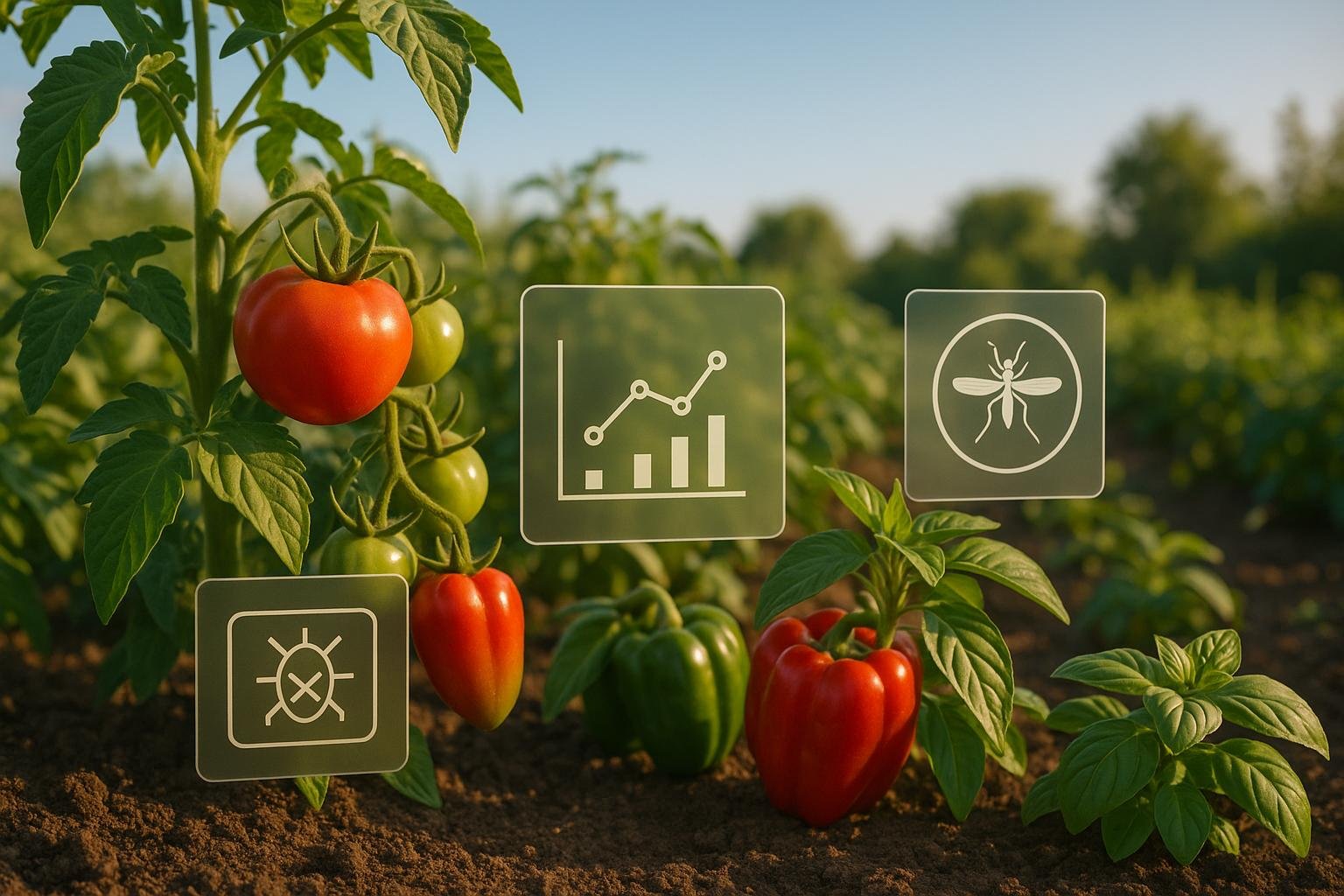
AI is transforming pest control for gardeners by providing localized, climate-specific solutions. Instead of generic methods, these AI-powered tools analyze factors like temperature, rainfall, soil conditions, and pest behavior to predict and prevent infestations. This approach is especially critical as climate change alters pest patterns and introduces new challenges. Here's what you need to know:
- Why it matters: Pests thrive under specific climate conditions, and traditional methods often fail to account for these dynamics, leading to overuse of chemicals and harm to ecosystems.
- How AI helps: AI tools predict pest outbreaks, identify pest-resistant plants, and provide targeted solutions using data from sensors, cameras, and weather forecasts.
- Real-world examples: Tools like Trapview and FarmSense use IoT sensors and AI to monitor and manage pests. Apps like AIGardenPlanner offer personalized advice for U.S. gardeners based on local conditions.
These advancements not only reduce chemical use but also improve the health of gardens by focusing on prevention and precision. Whether you're managing a backyard garden or a large property, AI tools are making pest control smarter and more efficient.
Precise , Immediate AI Pest Management

AI Tools for Pest Detection and Prevention
Today's AI-driven pest management systems combine cameras, sensors, and machine learning to detect and address pest issues early. By tailoring their responses to specific climate and regional needs, these tools enable precise, real-time solutions for pest control.
Pest Detection with AI Image Recognition and Sensors
AI-powered image recognition has revolutionized pest detection by identifying pests with remarkable accuracy. For example, the YOLOv5 model boasts a 96% success rate in recognizing common greenhouse pests [2]. This level of precision allows for targeted treatments, avoiding the need for broad-spectrum approaches.
A practical example of this technology is Trapview, created by EFOS Ltd. This system uses IoT-enabled insect traps equipped with cameras and sensors to monitor pest activity in orchards and vineyards. The data collected is analyzed by AI algorithms, which then prompt timely interventions. Trapview has demonstrated significant benefits, cutting down on labor, chemical use, and overall operational costs [6].
In addition to visual detection, some systems rely on specialized sensors to gather environmental and insect-related data. FarmSense offers a pest-monitoring platform that collects field data and uploads it to the cloud for AI analysis. The system adjusts its recommendations based on the unique needs of each grower. One standout feature is its FlightSensor optical units, deployed in California, which use "light curtains" inside traps to identify insect species in real time [4][7].
Acoustic sensors add another layer of detection. For instance, a multilayer perceptron (MLP) system employing acoustic sensors has achieved an impressive 99.78% accuracy in identifying 800 pest species, surpassing models like YOLOv5 and ResNet-50 [2].
Additionally, smart sensors that track soil moisture, humidity, and temperature help refine AI predictions, making it easier to prevent pest outbreaks before they escalate.
Smart Device Monitoring Systems
AI isn't just about detection - it also powers systems that actively manage pest threats through automated, real-time responses. Blue River Technology's "See & Spray" system, for example, uses deep learning to differentiate crops from weeds, slashing herbicide use by as much as 90% [4].
Rentokil's PestConnect system provides 24/7 monitoring with imaging devices strategically placed in high-risk areas. These devices capture images within 0.5 seconds of detecting movement and use infrared LEDs for clear visuals even in low light. This constant vigilance enables real-time pest control and detailed reporting of trends [5].
For rodent issues, Anticimex's SMART Digital Rodent Control System combines digital traps with sensors to monitor activity and predict rodent populations nearby, allowing for proactive intervention [4].
Automation has also advanced with solutions like Solinftec's Solix Ag Robotics. These robots patrol farm fields at night, targeting early-stage weeds with precise sprays. They also attract insects using specific light wavelengths and eliminate them with electrical shocks [4].
FarmWise takes a similar approach with its autonomous weeders operating in California and Arizona. Trained on millions of plant images, these machines distinguish crops from weeds, removing the latter without the need for chemicals or manual labor [7]. This method not only improves pest control but also minimizes environmental impact.
By integrating IoT sensors with cloud-based AI, these systems analyze enormous amounts of data to refine their recommendations continually. As one expert from Mutus Tech Ltd explained:
"The model adjusts to diverse climate conditions, ensuring pest management recommendations are accurate and effective across varying environments." - Mutus Tech Ltd [1]
These smart systems mark a major leap forward from traditional pest control, delivering precision, efficiency, and environmental advantages that were previously out of reach.
Using Biological Data and AI for Pest Control
AI is changing the game in pest control by combining biological and environmental data to offer precise, tailored solutions. Instead of relying on broad, one-size-fits-all methods, these systems analyze the intricate relationships between climate, soil, and pest behavior. The result? Recommendations that are specific to each region and condition. Let’s dive into how this works.
AI Learning Models for Climate-Based Solutions
Modern AI systems thrive on data - lots of it. By analyzing historical and real-time information, these systems continuously refine pest management strategies. They factor in weather trends, agricultural cycles, and pest life stages to create proactive solutions that adapt to ever-changing conditions [2].
Take the "Pest Forecast" platform developed by the Commonwealth Scientific and Industrial Research Organisation (CSIRO) in Australia. This tool uses machine learning to predict pest activity by analyzing weather forecasts and historical data. The system becomes smarter with each season, offering increasingly accurate, region-specific predictions [2].
"It is necessary to monitor the pest in the field, determine the most sensitive stage of pests, decide on the most appropriate control tactic (pesticide or other alternative methods) and apply it in the best time… Consequently, IPM requires intensive field observation, trained staff, and data mining." - M. Demirel and N.A. Kumral [3]
Deep learning models take this a step further by integrating real-time and historical data, improving the accuracy of local pest outbreak forecasts [4]. For example, the "Spornado" insect monitoring system uses sensors and machine learning algorithms to analyze data from insect traps, identifying and counting pests while adapting to seasonal and regional variations [2]. Similarly, Penn State University's "Plant Village" app leverages machine learning to identify pests and plant diseases from uploaded images. Over time, the app improves its accuracy across different climate zones [2].
Combining Soil, Weather, and Plant Health Data
AI doesn’t stop at predicting pest activity - it also excels at integrating diverse data sources like soil, weather, and plant health to create a full environmental profile [2]. This approach enhances precision in pest management.
For instance, researchers have developed deep learning models that combine data from weather stations, soil moisture sensors, and pest traps to predict infestations in vineyards. These systems analyze how soil moisture, temperature, and humidity interact to create conditions favorable for specific pests [2].
The University of Georgia’s "PestID" app is another example of AI in action. This mobile app uses machine learning to identify pests through smartphone images while factoring in environmental conditions that influence pest behavior and plant vulnerability [2].
AI systems also utilize satellite data, soil metrics, and climate information to forecast pest outbreaks with remarkable accuracy [8]. Tamil Nadu Agricultural University (TNAU) has developed an Android app that uses transfer learning and Deep Convolutional Neural Networks (DCNNs) to detect fall armyworm infestations in corn crops. By analyzing plant health data alongside environmental conditions, the app achieves high detection accuracy [2].
This integration of diverse data creates a feedback loop that continuously improves pest management strategies. AI systems analyze crop health, pest movement, and environmental factors to minimize pesticide use and reduce ecological impact [2]. This ensures interventions are both effective and environmentally conscious.
Advanced sensor networks play a key role in this process. Deployed in agricultural fields, these sensors monitor everything from soil pH and moisture to air temperature and humidity. AI then processes this data to detect patterns linked to pest activity [2].
The result? A new generation of pest management systems that predict problems before they arise, recommend targeted solutions, and adapt strategies to local conditions. By combining data from pest monitoring tools, weather satellites, and historical records, AI delivers actionable insights tailored to the unique challenges of each region [4]. These systems evolve alongside environmental changes, offering pest control solutions that are as dynamic as the conditions they address.
sbb-itb-4d6a8dd
🚀 Ready to Reinvent Your Garden?
Join thousands of homeowners who have transformed their gardens using our AI design tool. Upload one photo to explore endless possibilities.
Get your AI garden designs →AI Tools for U.S. Gardeners: Real Applications
AI’s role in pest management becomes much clearer when you look at the tools available to gardeners in the United States today. These tools bridge the gap between advanced agricultural research and practical backyard solutions, offering advice tailored to specific climates across the country. One standout example is AIGardenPlanner, a platform designed to meet the unique needs of U.S. gardeners.
AIGardenPlanner: Custom Pest and Plant Recommendations
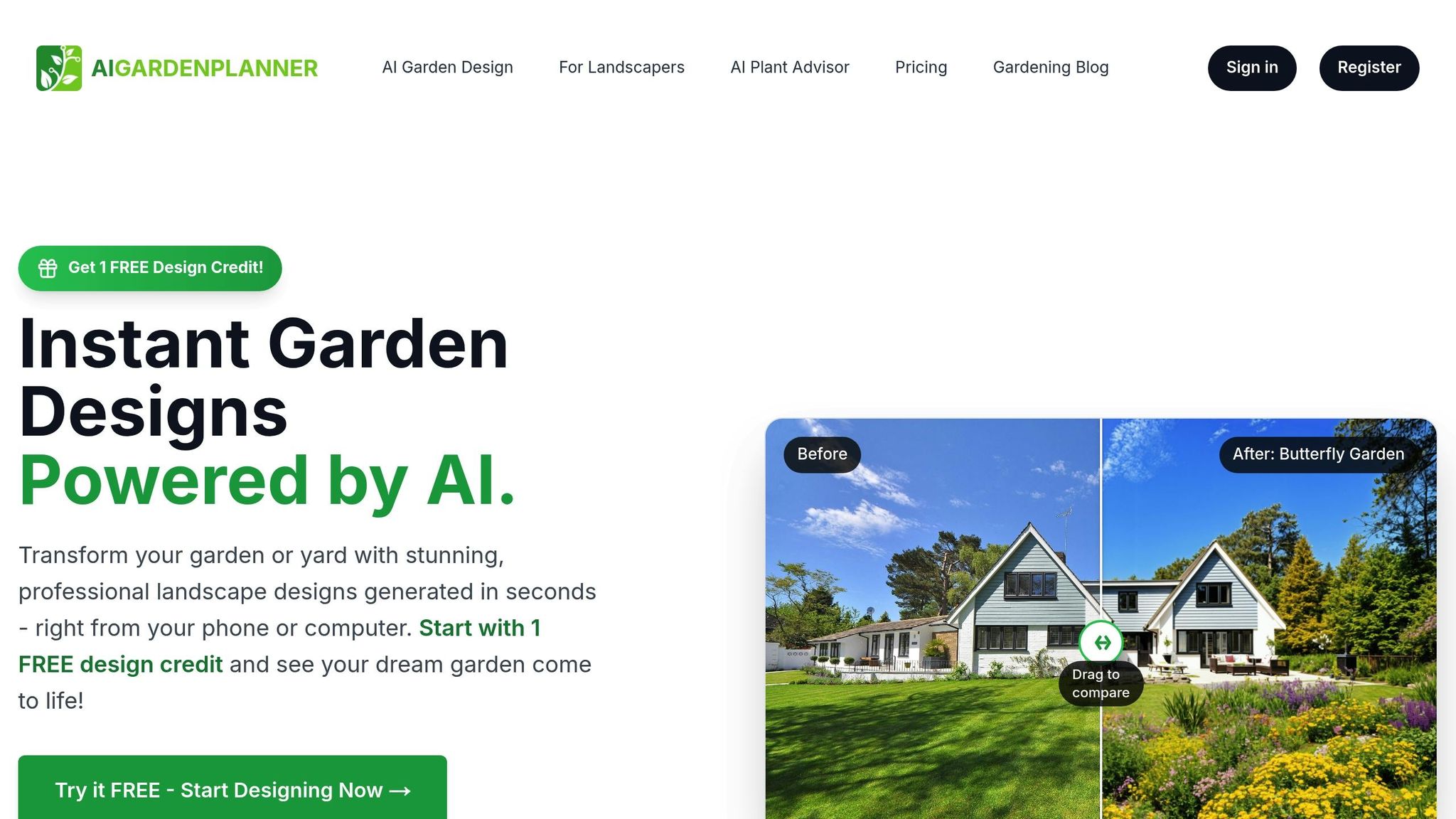
AIGardenPlanner combines garden design with pest management tailored to your local climate. Its AI Plant Advisor uses data like your climate zone, soil type, and weather patterns to recommend plants that are naturally resistant to common pests in your area[10]. This proactive approach helps prevent pest problems by ensuring you start with plants suited to your environment.
For instance, it addresses issues like the humid summers in the Southeast, which often lead to fungal diseases, or the dry conditions in the Southwest, which attract entirely different pests. By simply entering your location, you’ll receive detailed care guides and planting schedules that align with local pest cycles and seasonal changes[10].
What sets this tool apart is how it integrates pest control into garden planning. Instead of treating pest management as an afterthought, the AI Plant Advisor suggests plant combinations that naturally deter pests. For example, it might recommend companion planting strategies, such as using specific flowers to repel insects that typically target nearby vegetables.
The platform is accessible for casual users with a Pay-As-You-Go plan priced at $15, which includes 15 garden designs and full access to the AI Plant Advisor[10]. For those who need more, subscription options start at $9 per month (billed annually), offering 50 garden designs each month and ongoing personalized plant recommendations[10].
Features for Home Gardeners and Landscapers
Beyond its core recommendations, AIGardenPlanner enhances the gardening experience with practical features. It converts measurements to imperial units and can transform photos of your garden into professional designs that include pest management insights. For example, when you upload a garden photo, the AI identifies potential pest-prone areas and suggests design adjustments to minimize pest issues.
For landscapers, the platform offers commercial licensing and priority support, making it ideal for managing properties with diverse microclimates. The Pro plan, priced at $21 per month (billed annually), includes 200 AI-generated photos and commercial licensing. The Premium plan, at $42 per month, supports up to 1,000 projects and provides 500 AI photos monthly[10].
The platform also provides detailed growing guides that cover sunlight, water needs, and regional pest calendars. By analyzing local climate data, it creates planting schedules and pest monitoring timelines tailored to your area[11]. Its pest management advice goes beyond identification, offering actionable tips like adjusting watering schedules during peak pest seasons or choosing mulch that deters specific insects common in your region[11].
For landscapers managing properties across different climates, AIGardenPlanner’s ability to create location-specific plans is invaluable. It allows separate profiles for each property, ensuring that pest strategies for a coastal garden differ from those for an inland space, even within the same state.
This localized approach is crucial, especially when pests are responsible for destroying up to 40% of global crops annually. With AI tools like this, which can identify pests with over 90% accuracy based on extensive datasets, gardeners can move from reacting to pest problems to staying ahead of them[9].
Future of AI in Climate-Based Pest Solutions
AI is set to revolutionize pest management, turning it into a system that’s both precise and environmentally conscious. By focusing on prediction and prevention, these advancements promise to reduce chemical use and improve efficiency.
New AI Technologies for Precision Pest Control
One standout innovation in this field is smart spraying technology. For instance, Niqo Robotics' Niqo Sense™ can selectively spray only the plants that need treatment, reducing chemical use by up to 60% [12]. Similarly, ecoRobotix’s ARA sprayer targets individual plants with pinpoint accuracy, cutting chemical use by up to 95% [12]. This marks a major shift from traditional methods, where chemicals are broadly applied regardless of actual pest presence.
Advanced pest monitoring systems are another game-changer. These systems go beyond basic detection, using tools like image analysis and real-time weather data to respond more effectively. By combining local environmental data with pest activity, interventions can be timed with incredible precision.
IoT sensors and cloud-based AI are also creating networks that track soil conditions, temperature, humidity, and pest behavior around the clock. Over time, as these systems gather more data, their predictions become sharper and interventions more effective [4].
To address the unpredictability of pest outbreaks driven by climate change, climate-adaptive algorithms are being developed. These systems incorporate real-time climate data to predict shifts in pest populations and adjust control measures accordingly [14]. As Aldo Leopold aptly put it:
"Agricultural science is largely a race between the emergence of new pests and the emergence of new techniques for their control." – Aldo Leopold [3]
These technologies pave the way for pest control methods that are not only more adaptive but also gentler on the environment.
AI's Role in Supporting Eco-Friendly Gardening
Beyond large-scale farming, AI is also making waves in home gardening by promoting eco-friendly pest control practices. Instead of relying on chemical pesticides, AI systems now suggest alternatives like targeted traps, physical barriers, and natural deterrents [13]. This shift aligns with the growing demand for safer, more sustainable pest management solutions.
AI is also simplifying Integrated Pest Management (IPM), a method traditionally seen as resource-intensive. By automating tasks like field observation and data analysis, AI makes it easier for home gardeners to adopt sophisticated pest control strategies without needing expert knowledge.
Another major benefit is the preservation of beneficial organisms. AI systems can optimize treatment timing and dosage, targeting harmful pests while sparing helpful creatures like pollinators and natural predators [14]. This balance helps maintain the garden’s natural ecosystem.
AI is even introducing strategies that enhance garden resilience. By analyzing data, these systems can recommend practices like crop rotation, companion planting, or creating habitats that naturally deter pests. For example, certain plant combinations can attract beneficial insects or create conditions that make it harder for pests to thrive.
According to industry expert Inupa Bandara:
"Data is the backbone of AI" [3]
AI-driven pest control systems continuously learn from past successes and failures, adapting to changing conditions and becoming more effective over time - all while reducing environmental harm.
Looking ahead, integrating blockchain with AI could bring even more accountability by tracking pesticide use transparently [4]. A collaboration between Semios and Google already illustrates the potential of these technologies. Their efforts to control moth populations in almond orchards led to a reduction of 1.5 billion moths, boosting yields while lessening environmental strain [4].
These advancements could increase garden yields by 20–25% while helping gardens adapt to shifting ecosystems [15]. For U.S. gardeners grappling with unpredictable weather and evolving pest challenges, these tools offer a way to maintain healthy, productive gardens with minimal environmental impact.
FAQs
How does AI make pest detection and management more effective than traditional methods?
AI is transforming pest detection and management through the use of advanced algorithms, machine learning, and sensor technology. These tools can spot pests early, forecast potential outbreaks, and offer customized solutions based on regional and climate-specific needs.
With automated pest monitoring, there’s less reliance on manual scouting, reduced chemical usage, and quicker, more precise interventions. This approach leads to healthier plants, greater efficiency, and a more eco-friendly way to manage pests.
How does using AI-powered pest control benefit the environment in gardening?
AI-powered pest control systems bring several eco-friendly advantages to gardening. By focusing on specific pests, they cut down the reliance on chemical pesticides, which helps safeguard soil, water, and nearby ecosystems. This targeted approach also protects beneficial insects, like pollinators, from unintended harm, contributing to a healthier garden environment.
These systems also improve resource management by optimizing the use of water and fertilizers, minimizing waste and reducing the overall environmental footprint. By encouraging gardening practices that are mindful of nature, AI technology helps maintain healthier ecosystems while making it easier for gardeners to address climate-related challenges.
How can AI tools like AIGardenPlanner help gardeners protect their plants from pests based on local climate conditions?
AI tools like AIGardenPlanner simplify the process of designing pest-resistant gardens by examining your local climate and forecasting potential pest challenges. Using regional climate data, these tools provide personalized pest management strategies and recommend plants that are naturally better equipped to handle local pests.
On top of that, AIGardenPlanner can create custom garden layouts featuring climate-suited plants and pest-resistant varieties. By blending tailored advice with detailed climate insights, gardeners can tackle pests more effectively and cultivate healthier, thriving gardens.
Related posts
Related Articles
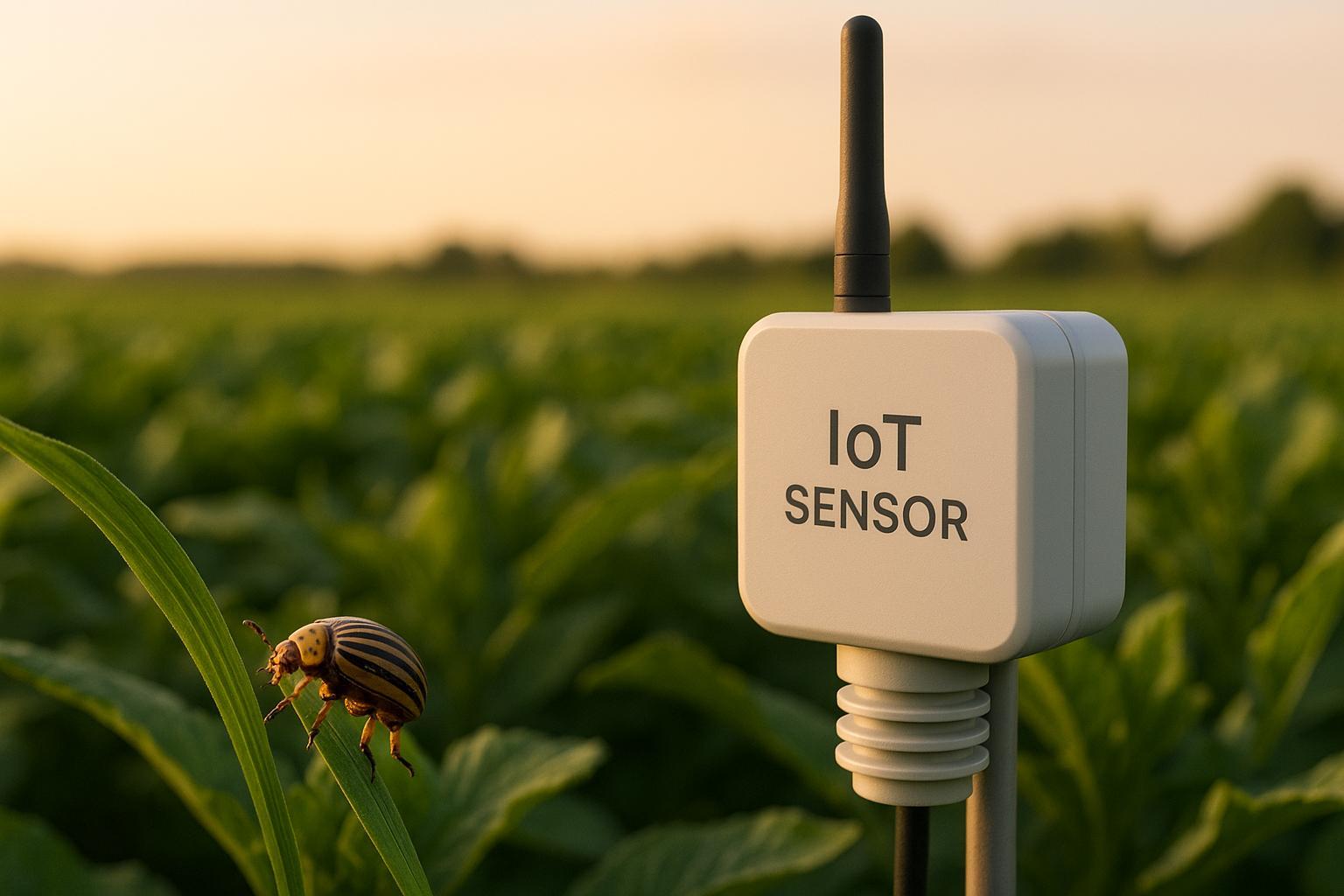
How IoT Sensors Transmit Pest Data
Explore how IoT sensors revolutionize pest monitoring through real-time data and automation, enhancing crop management and reducing pesticide use.
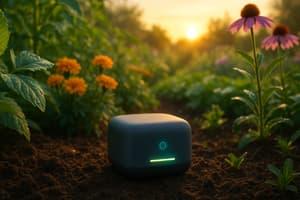
AI Pest Control: What Gardeners Need to Know
Explore how AI pest control revolutionizes gardening with early detection, targeted treatments, and eco-friendly practices for healthier plants.
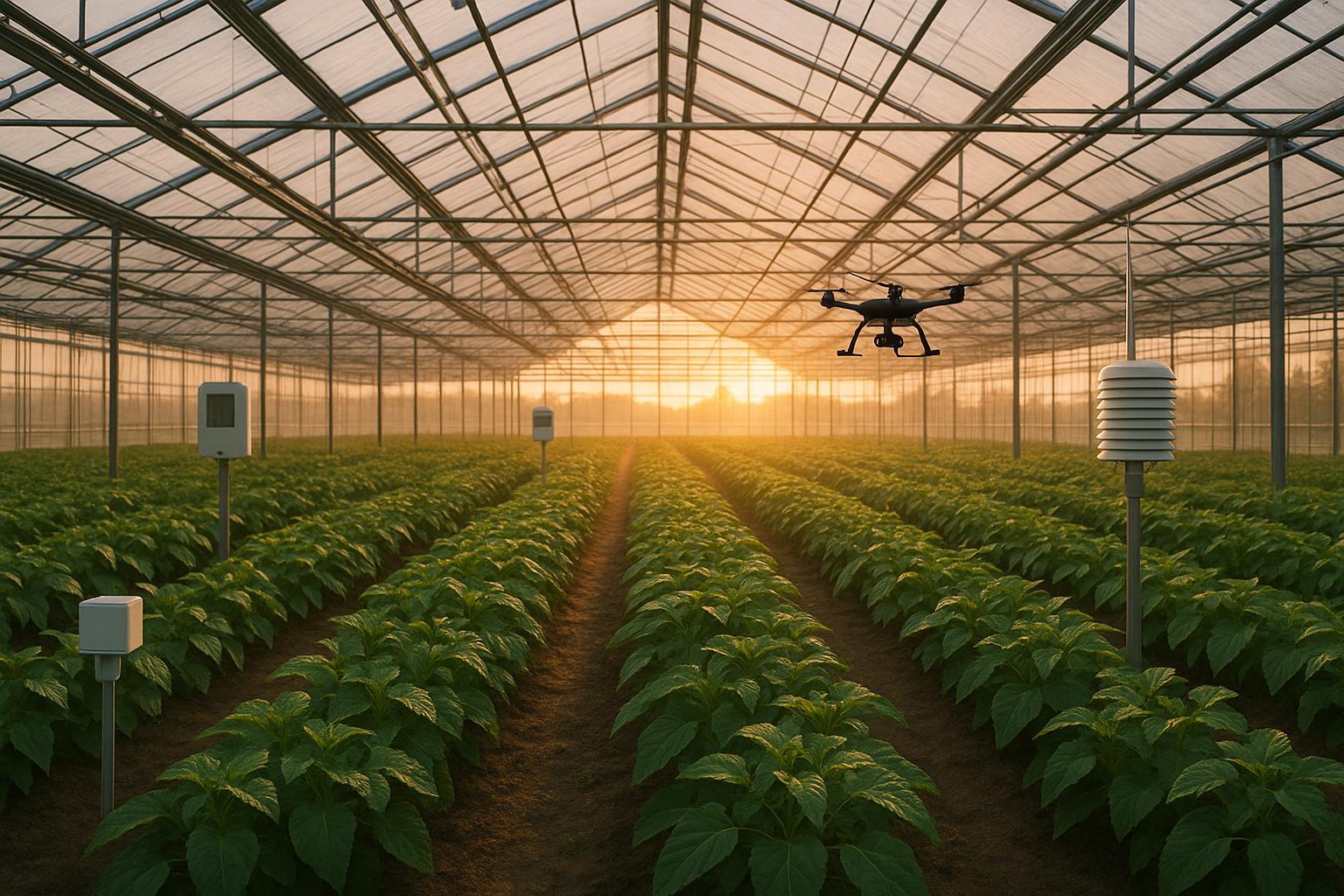
IoT in Biocontrol: Case Studies
Explore how IoT technology is revolutionizing pest management through precision, efficiency, and sustainable practices in agriculture and gardening.

Optimizing Your Garden for Property Size: A Comprehensive Guide
Discover key factors for maximizing your garden space based on your property size. Learn how to utilize vertical space, select the right plants, and design a garden that suits your property.
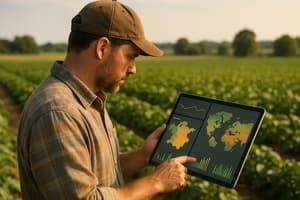
Big Data for Climate-Specific Pest Control
Explore how big data analytics revolutionizes pest control by enabling real-time, climate-specific strategies for farmers and gardeners.
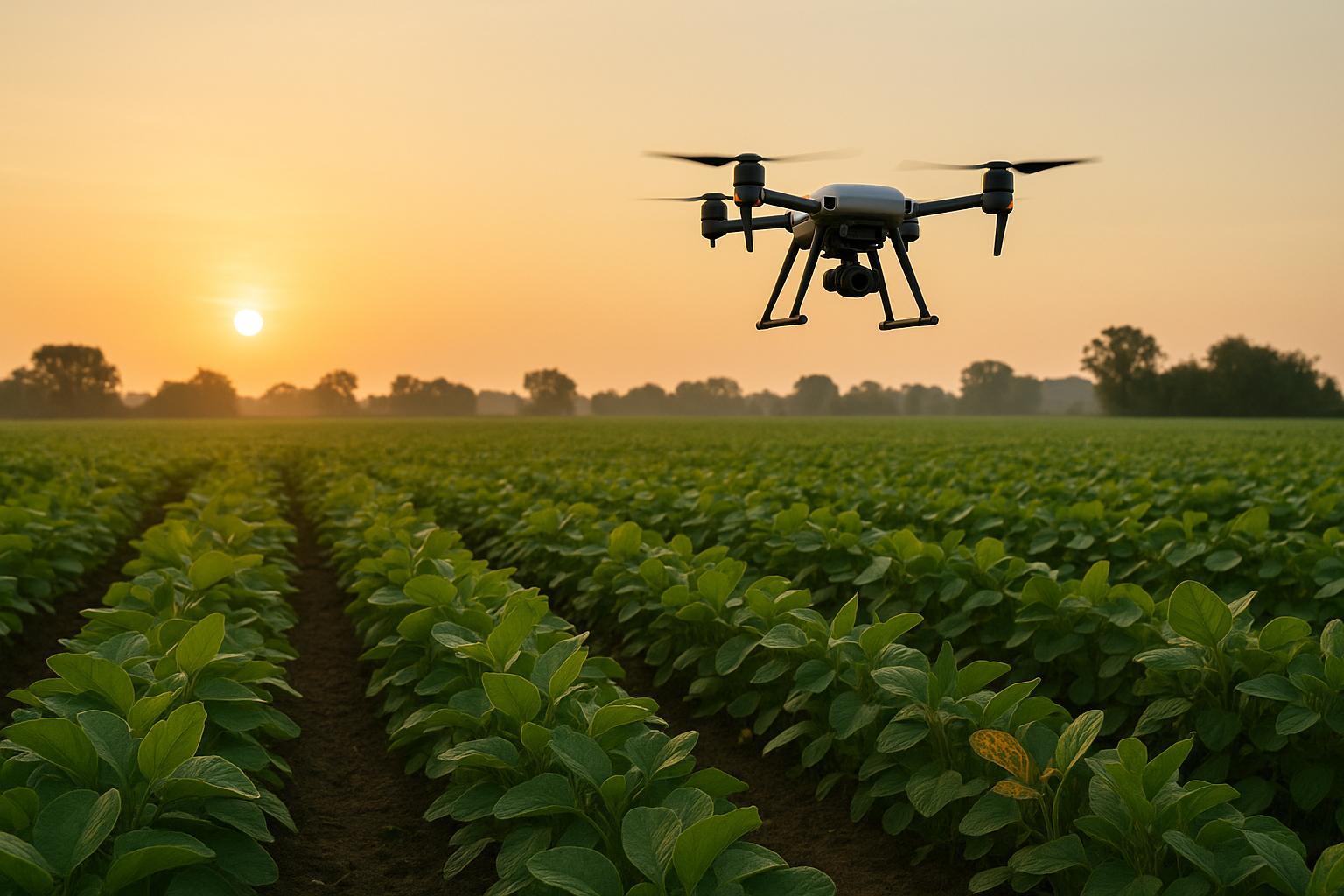
How AI Analyzes Drone Pest Data
AI-driven drones revolutionize pest management in agriculture by enabling early detection and precise treatment, enhancing crop health and sustainability.